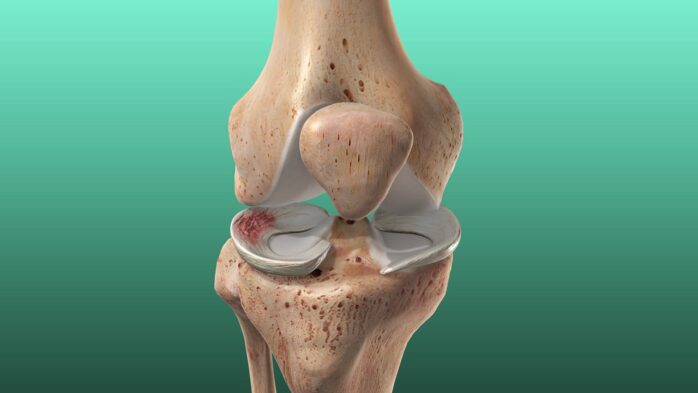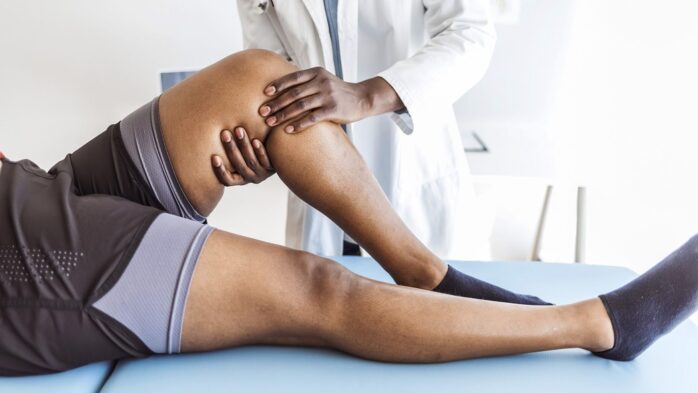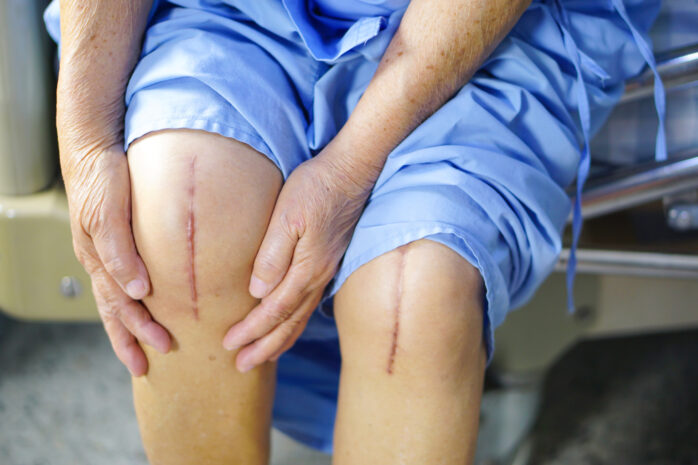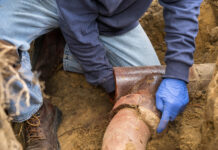
Sports are one of the most common causes of various locomotor injuries. With lots of sudden movements and situations where your legs are in unphysiological positions, the meniscus is one of the first things that gets injured.
For athletes, this means staying out of the field for quite some time. With various procedures and exercises you can do, overcoming this situation is surely doable.
However, the main question remains which is how can you prevent the tear from getting worse, which is what we are going to explain in this article. Keep reading and find out more.
Type of damage

The first thing that needs to be determined is the type of damage that is done to the meniscus. Since this is the tissue that is between the knee bones, it absorbs the shock which is why it is one of the most common injuries. In addition, it has receptors that say what is the current position and flexure of our legs.
The meniscus damage is usually combined with one of the lateral and the anterior crossed ligament. So, evaluation of them all is essential. Sole injury is rare but it should not be overseen.
When it comes to the tear there can be three types, one that goes through the thickness of the tissue or in a vertical direction. Another one is transverse, and lastly, we have longitudinal tears. Certain situations cause a tear that looks like a handle of a bucket.
In addition, the location where the damage is done is also important. If it is done in the middle portions of the meniscus, the healing is slower and sometimes impossible. On the other hand, the periphery has more contact with the blood vessels which contributes to a quicker healing process.
With different types of tears and their location, the therapy is different. While some require surgery others can be let with a nonsurgical plan which is the reason why going to a doctor for a medical evaluation is essential.
Medical evaluation
The next thing that has to be done is evaluation of the injury by a specialist in this field or this case an orthopedic. With a series of tests and physical exams, the primary diagnosis will be settled. After that, using imaging methods, where magnetic resonance is preferred since it allows soft tissue to be perfectly seen.
If there is a tear, it will surely not be missed. Depending on the results and the severity of the cut, as well as how active the person is, the therapeutic method is being determined. For minor tears in people who are not doing sports, the surgical treatment is rejected. On the other hand, athletes are better to be operated on to repair the meniscus and get them back on the pitch quicker.
As jeremyburnhammd.com suggests, having a medical evaluation quickly after the injury is essential for many reasons. While the pain and swelling can go away on their own, you don’t want to miss a meniscus tear. Not only it can get worse, but you contribute to arthritis at a younger age which is just unforgivable.
Specific care

When it comes to specific care, there are a couple of things that you should do. The first thing is treating the pain with some sort of medication that your doctor will prescribe. When it comes to your behavior, you should rest and elevate the hurt leg to prevent swelling. Ice is great for swelling reduction as well.
In addition, you might consider keeping your knee stable with compressive bandages or wearing a brace. Keeping yourself active is essential since laying around for a long time can cause contractures of your muscles and atrophy in some parts. However, be sure you are only doing mild walks to avoid overloading the knee prematurely.
There are lots of physical activities that you can do which will be presented to you by your orthopedic. Strengthening your surrounding muscles is important for stability, and they are contributing to reducing the risk of getting the tear worsen.
Avoiding activities that overwhelm the knee
As mentioned above, you don’t want to put your knee at strain prematurely. The meniscus is still freshly injured, and any load can cause the tears to worsen. As a tissue that does not regenerate quickly, creating larger tears is surely something you want to avoid.
For that reason, walking inclines and mountains should be forgotten for now. Be sure to walk on flat surfaces and for a short time. If you are unable to step on your foot, doing exercises in bed is effective as well. Just do not put a strain on your knee and you should be okay.
In addition, you might get a suggestion to do physiotherapy. They will work on strengthening your muscles and provide stability for your future activities. Even when you consider doing surgery, doing physio after it is essential to bring the functionality of your knee back with all the strength and mobility as before.
Surgery

The last thing that remains as a therapeutic method is doing surgery. Although this is highly dependent on the doctor and the situation of your meniscus, it still should be considered. Especially for athletes, doing a quick surgery helps in preserving their career and bringing them back to the pitch.
For that reason, visiting an orthopedic center as quickly as you can is highly important. If the meniscus gets treated quickly, the functionality will not be impaired at all. In addition, you prevent unneeded rubbing of the bones which helps in preventing arthroses, especially in young individuals.
Conclusion
As serious as the functionality of a person a meniscus tear can be, many treatment methods can be done to help every patient. However, being responsible and going to a doctor quickly can be a direct indicator of the outcome of the injury.
When the tear is fresh it can be simply sewed and reconstruction will not be needed. Not only the surgery is easier, but you’ll preserve your meniscus. At last, visiting your doctor on time will help you in learning lots of things on how to prevent the tear from worsening and getting larger.











